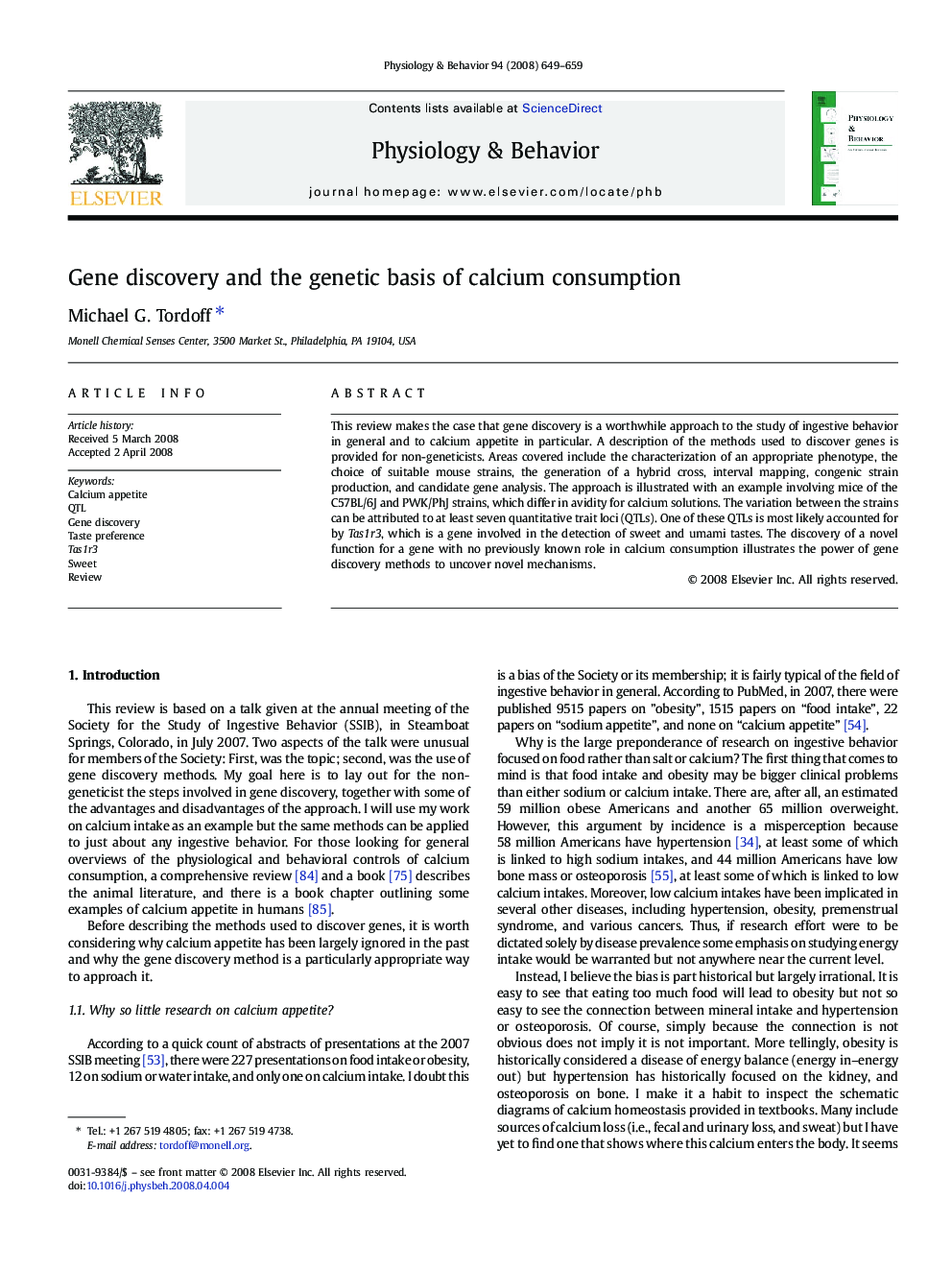| Article ID | Journal | Published Year | Pages | File Type |
|---|---|---|---|---|
| 2845894 | Physiology & Behavior | 2008 | 11 Pages |
This review makes the case that gene discovery is a worthwhile approach to the study of ingestive behavior in general and to calcium appetite in particular. A description of the methods used to discover genes is provided for non-geneticists. Areas covered include the characterization of an appropriate phenotype, the choice of suitable mouse strains, the generation of a hybrid cross, interval mapping, congenic strain production, and candidate gene analysis. The approach is illustrated with an example involving mice of the C57BL/6J and PWK/PhJ strains, which differ in avidity for calcium solutions. The variation between the strains can be attributed to at least seven quantitative trait loci (QTLs). One of these QTLs is most likely accounted for by Tas1r3, which is a gene involved in the detection of sweet and umami tastes. The discovery of a novel function for a gene with no previously known role in calcium consumption illustrates the power of gene discovery methods to uncover novel mechanisms.
